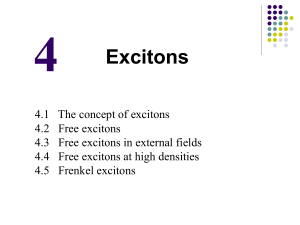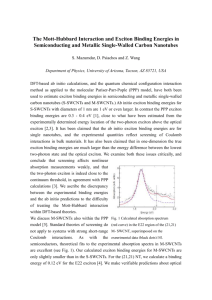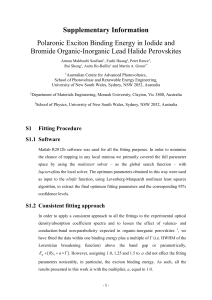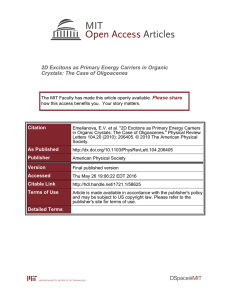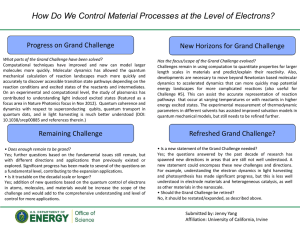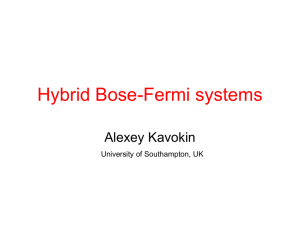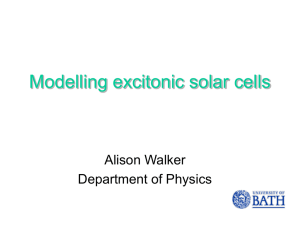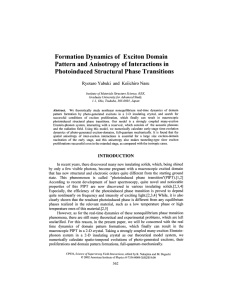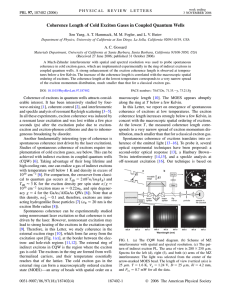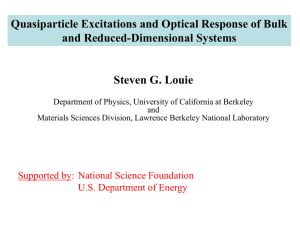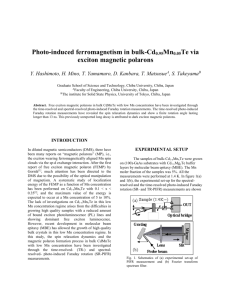How Do Remarkable Properties of Matter Emerge from Complex
advertisement
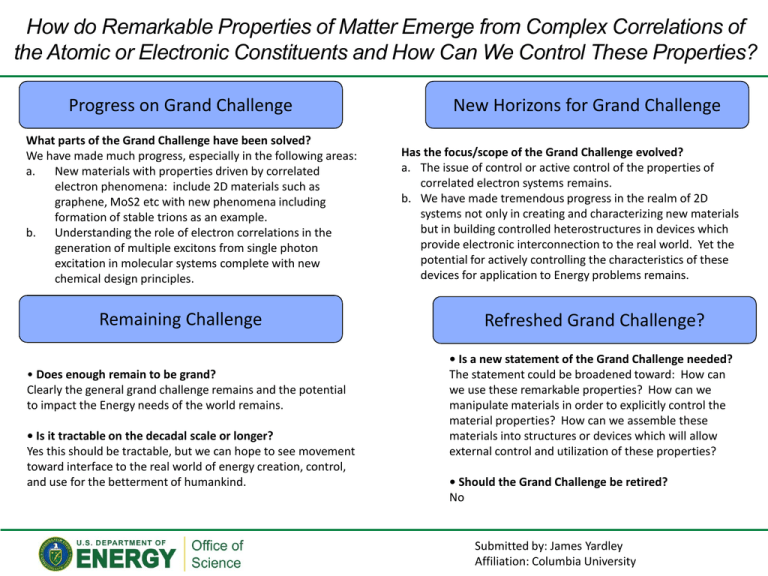
How do Remarkable Properties of Matter Emerge from Complex Correlations of the Atomic or Electronic Constituents and How Can We Control These Properties? Progress on Grand Challenge What parts of the Grand Challenge have been solved? We have made much progress, especially in the following areas: a. New materials with properties driven by correlated electron phenomena: include 2D materials such as graphene, MoS2 etc with new phenomena including formation of stable trions as an example. b. Understanding the role of electron correlations in the generation of multiple excitons from single photon excitation in molecular systems complete with new chemical design principles. Remaining Challenge • Does enough remain to be grand? Clearly the general grand challenge remains and the potential to impact the Energy needs of the world remains. • Is it tractable on the decadal scale or longer? Yes this should be tractable, but we can hope to see movement toward interface to the real world of energy creation, control, and use for the betterment of humankind. New Horizons for Grand Challenge Has the focus/scope of the Grand Challenge evolved? a. The issue of control or active control of the properties of correlated electron systems remains. b. We have made tremendous progress in the realm of 2D systems not only in creating and characterizing new materials but in building controlled heterostructures in devices which provide electronic interconnection to the real world. Yet the potential for actively controlling the characteristics of these devices for application to Energy problems remains. Refreshed Grand Challenge? • Is a new statement of the Grand Challenge needed? The statement could be broadened toward: How can we use these remarkable properties? How can we manipulate materials in order to explicitly control the material properties? How can we assemble these materials into structures or devices which will allow external control and utilization of these properties? • Should the Grand Challenge be retired? No Submitted by: James Yardley Affiliation: Columbia University Excitons in atomically thin transition metal dichalcogenides Scientific Achievement We have determined experimentally the energies of the excited excitonic states of the fundamental optical transition in monolayer tungsten disulfide. From these we establish a large exciton binding energy of 0.32 eV and observe a pronounced deviation from the usual hydrogenic behavior. We explain these results using a microscopic theory in which the non-local nature of the dielectric screening modifies the Coulomb interaction. Significance and Impact Monolayer tungsten disulfide is part of the family of new directgap semiconductors useful for atomically thin electronic and photovoltaic devices. The properties of these materials are found to be strongly influenced by the excitonic effects. Our study of the excitonic properties provides a fundamental insight in the nature of the Coulomb interaction in two-dimensional crystals. Research Details Top: Reflectance derivative spectrum of the monolayer tungsten disulfide with an illustration of the exciton level structure; Bottom: experimental and calculated exciton energy levels and a spatially resolved image of the 2s state A. Chernikov, T. C. Berkelbach, H. M. Hill, A. Rigosi, Y. Li, Ö. B. Aslan, D. R. Reichman, M. S. Hybertsen, T. F. Heinz: "Anomalous excitons in atomically thin materials." submitted manuscript We experimentally determined the energies of the excited states of the excitons in monolayer WS2 We have observed an unusually large exciton binding energy of 0.32 eV as well as strong deviations of the excitonic properties from the conventional hydrogen model We have used microscopic theory to explain our findings in terms of non-uniform dielectric environment, characteristic for two-dimensional materials

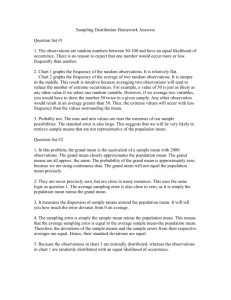







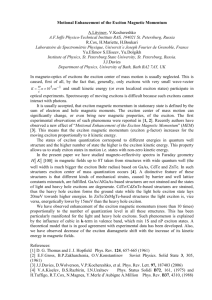
![[Book Title], Edited by [Editor`s Name]](http://s3.studylib.net/store/data/007775765_1-8faeaa1679738ee06354ecdecefb0a50-300x300.png)
